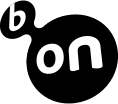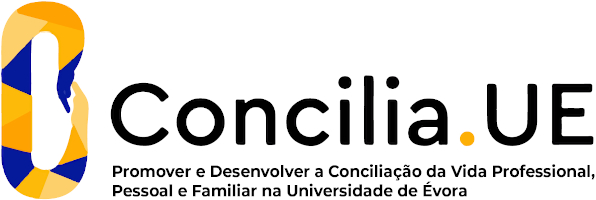2025
Relaxation Methods
Name: Relaxation Methods
Code: DES13905L
3 ECTS
Duration: 15 weeks/78 hours
Scientific Area:
Human Kinetics
Teaching languages: Portuguese
Languages of tutoring support: Portuguese, English, Spanish
Regime de Frequência: Presencial
Presentation
Relaxation is one of the main techniques of psychomotor intervention. This CU focuses on the basic foundations of relaxation and the essential methods of psychomotor practice.
Sustainable Development Goals
Learning Goals
Students should acquire
A. Knowledge
-Know the historical and epistemological aspects of relaxation interventions
-Understand the impact of relaxation in the physiological, sensory, psychomotor and emotional domains
-Know the techniques of therapeutic action in relaxation
-Know the technical and methodological aspects of relaxation methods: Autogenous Training, Progressive Relaxation, Active-Passive, Concentration-Relaxation, Eutony
-Know the techniques of prescription, planning, implementation and evaluation of relaxation interventions as a therapeutic process.
B.Competencies:
-Self-regulation of own body and emotions in social relationships
-Prescription, planning, implementation and evaluation of therapeutic intervention programs based on different relaxation methods
-Establishment and maintenance of the therapeutic relationship
-Use and adapt the body and the techniques in the relation with the other, with availability to tonic empathy
A. Knowledge
-Know the historical and epistemological aspects of relaxation interventions
-Understand the impact of relaxation in the physiological, sensory, psychomotor and emotional domains
-Know the techniques of therapeutic action in relaxation
-Know the technical and methodological aspects of relaxation methods: Autogenous Training, Progressive Relaxation, Active-Passive, Concentration-Relaxation, Eutony
-Know the techniques of prescription, planning, implementation and evaluation of relaxation interventions as a therapeutic process.
B.Competencies:
-Self-regulation of own body and emotions in social relationships
-Prescription, planning, implementation and evaluation of therapeutic intervention programs based on different relaxation methods
-Establishment and maintenance of the therapeutic relationship
-Use and adapt the body and the techniques in the relation with the other, with availability to tonic empathy
Contents
1) The historical and epistemological aspects of relaxation interventions
a. The stress response and the relaxation response;
b. The impact on proprioception and interoception;
c. The impact on tonus, body schema and body image, and movement;
d The impact on emotional awareness and emotional regulation.
2) Methodological orientation of relaxation as a therapeutic approach:
a. Prescription techniques;
b. Planning, implementation and monitoring of the intervention;
c. Techniques of therapeutic action in relaxation;
ii. The therapeutic relationship;
iii. The observation of the patient;
iv. The obstacles and conflicts in relaxation;
v. Adaptations to interventions with children;
vi. Evaluation of the intervention.
3) Autogenic Training, Progressive Relaxation, Active-Passive Relaxation, Eutony, Concentration-Relaxation: theoretical principles and methodological aspe
a. The stress response and the relaxation response;
b. The impact on proprioception and interoception;
c. The impact on tonus, body schema and body image, and movement;
d The impact on emotional awareness and emotional regulation.
2) Methodological orientation of relaxation as a therapeutic approach:
a. Prescription techniques;
b. Planning, implementation and monitoring of the intervention;
c. Techniques of therapeutic action in relaxation;
ii. The therapeutic relationship;
iii. The observation of the patient;
iv. The obstacles and conflicts in relaxation;
v. Adaptations to interventions with children;
vi. Evaluation of the intervention.
3) Autogenic Training, Progressive Relaxation, Active-Passive Relaxation, Eutony, Concentration-Relaxation: theoretical principles and methodological aspe
Teaching Methods
The theoretical classes (T) follow an active learning model. Students are organized into working groups (G), to which clinical cases are assigned that require the prescription of an intervention plan based on relaxation methods. In the first theoretical class, the prescription methodology that will guide the work throughout all sessions is presented. Problem-solving requires prior reading and in-class discussion, using different formats such as concept maps, oral debate, or other forms of group analysis, always in interaction with the lecturer. Each session ends with a joint systematization of the material, supported by visual summaries, videos, or diagrams.
The practical classes (P) focus on the experience, technical learning, and application of different relaxation methods. In the first sessions, relaxation experiences are led by the lecturer, allowing students to understand and feel the methods in practice. Gradually, students take on the planning and implementation of the sessions, applying the knowledge acquired and playing an active role in conducting the practices, always under the lecturer?s supervision. In addition to the technical component, the practical classes encourage expression and reflection on the impact of bodily experiences, using different means ? such as oral sharing, written records, or visual representations ? to support the personal and academic integration of these experiences.
This pedagogical model promotes autonomy, the consolidation of technical skills, and direct experience, ensuring multiple means of engagement, representation, and expression, in line with the principles of Universal Design for Learning (UDL).
The practical classes (P) focus on the experience, technical learning, and application of different relaxation methods. In the first sessions, relaxation experiences are led by the lecturer, allowing students to understand and feel the methods in practice. Gradually, students take on the planning and implementation of the sessions, applying the knowledge acquired and playing an active role in conducting the practices, always under the lecturer?s supervision. In addition to the technical component, the practical classes encourage expression and reflection on the impact of bodily experiences, using different means ? such as oral sharing, written records, or visual representations ? to support the personal and academic integration of these experiences.
This pedagogical model promotes autonomy, the consolidation of technical skills, and direct experience, ensuring multiple means of engagement, representation, and expression, in line with the principles of Universal Design for Learning (UDL).
Assessment
Continuous assessment of (i) knowledge includes the analysis and presentation of a text (45%, group), and of (ii) skills includes the application of active-passive relaxation (5%, individual), as well as the planning and facilitation of two sessions with the corresponding report (50%, group).
Examination-based assessment consists of a written test (45%) and a practical test (55%).
Examination-based assessment consists of a written test (45%) and a practical test (55%).





















